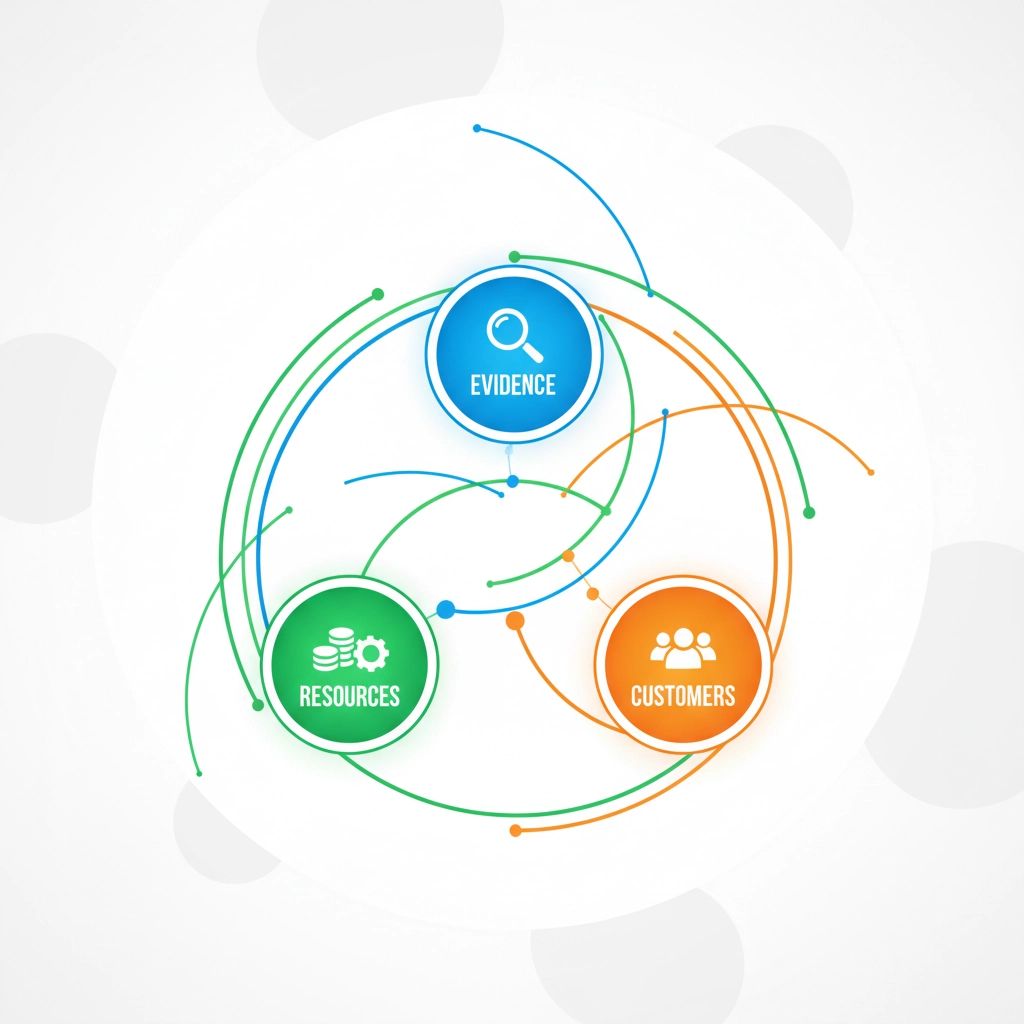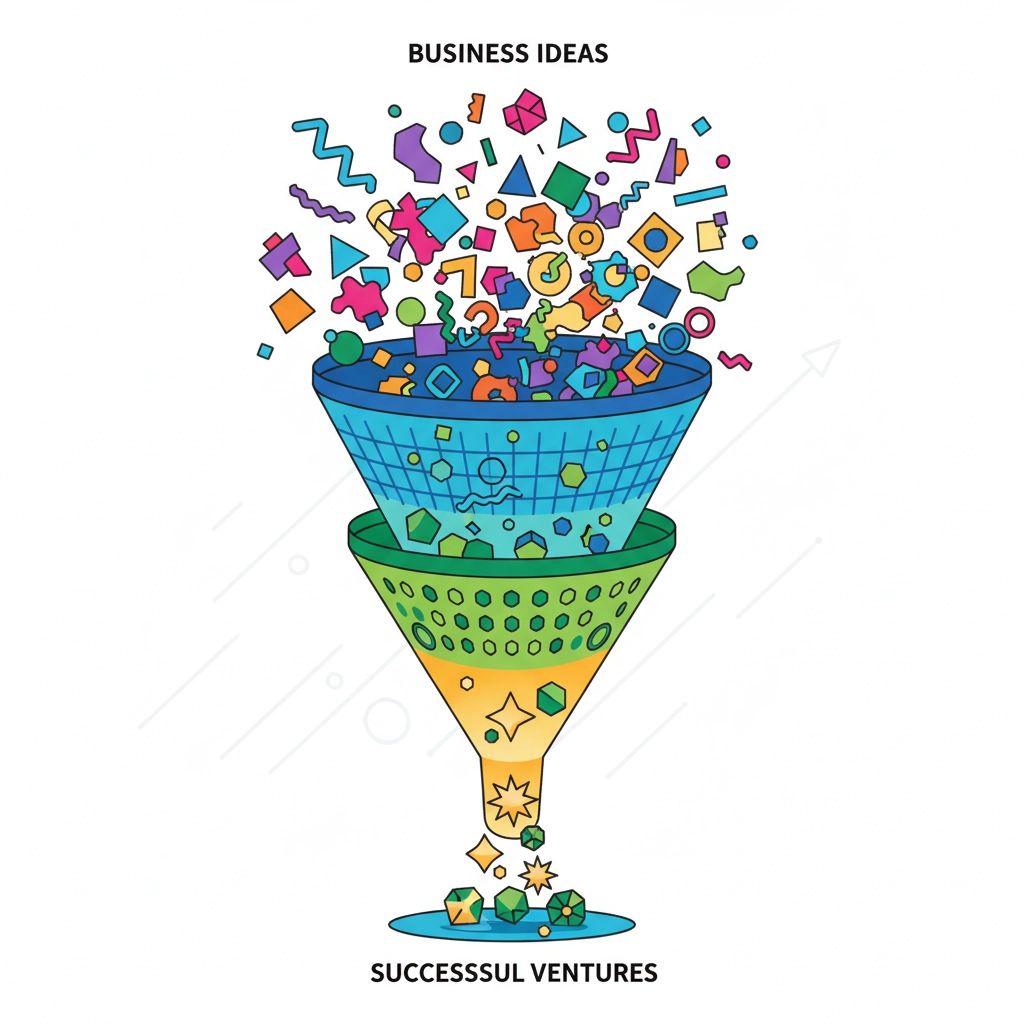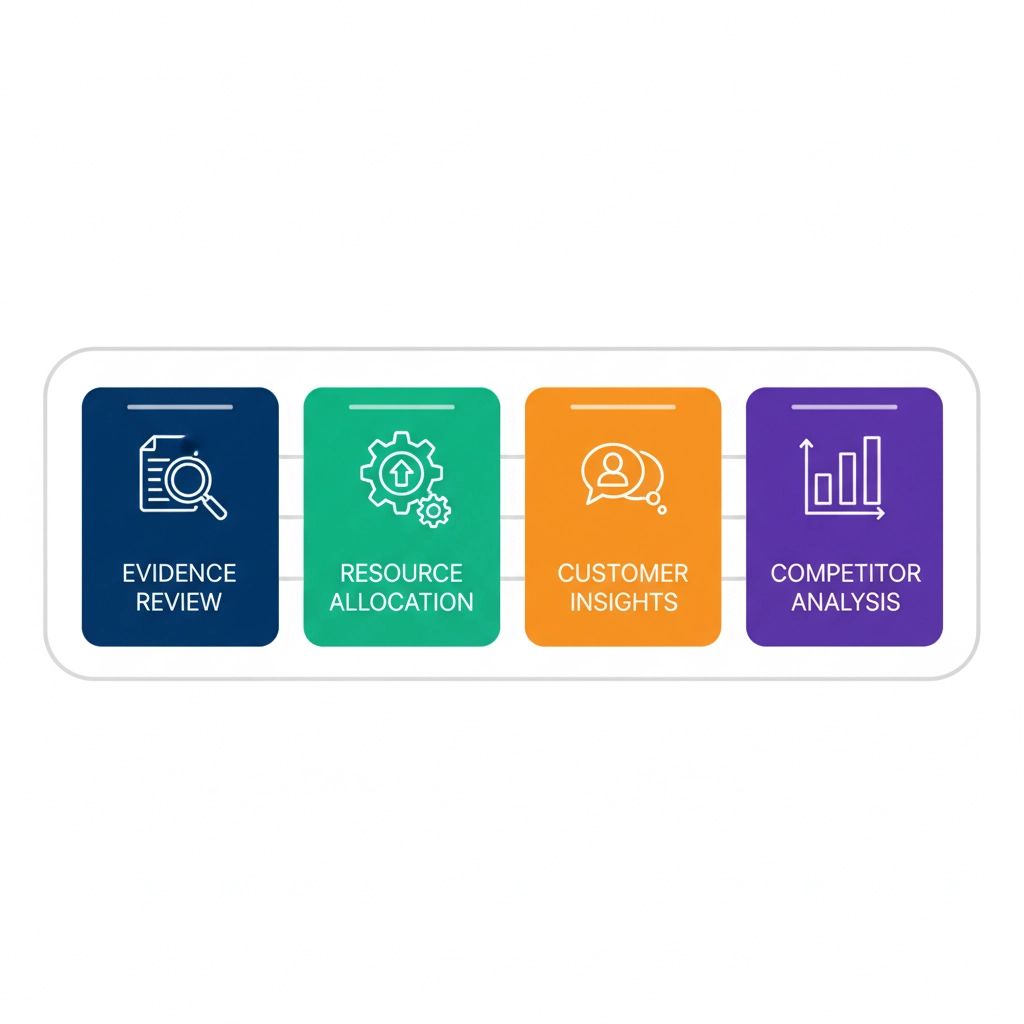Outfunded? How Smart Founders Use Alignment Systems to Survive (& Win) When Competitors Have More Cash
Oct 16, 2025
Here's the thing about being outfunded: it forces you to get really, really good at being right.
While your well-funded competitors are burning through Series A cash building products nobody wants, you're out there with your bootstrapped budget, forced to validate every assumption before you spend a dime. That pressure? It's not a disadvantage: it's your secret weapon.
I've seen too many deeptech and healthtech founders get discouraged when competitors raise massive rounds. But here's what those founders miss: more money often amplifies existing problems rather than solving them. The startups that survive and win aren't always the ones with the biggest war chest: they're the ones with the tightest alignment between what they build, what the market wants, and how they operate.
Why Funding Actually Makes Competitors Vulnerable

Most startups fail to raise VC funding not because their ideas are terrible, but because they're misaligned with what investors actually want. But here's the kicker: this misalignment becomes even more dangerous for funded startups. They have enough runway to pursue the wrong direction for way too long.
Think about it: if you're a healthtech startup with $5M in the bank, you can spend 18 months building a beautiful AI diagnostic tool before discovering hospitals won't change their workflows for it. Meanwhile, you: with your $500K budget: are forced to validate that workflow integration from day one.
The funded competitors get trapped in what I call "solution-first thinking." They fall in love with their technology and assume the market will adapt. You? You're forced into market-first thinking because you literally can't afford to be wrong.
For deeptech founders, this plays out constantly. That quantum computing startup with massive funding can spend two years perfecting their algorithm before testing real-world applications. But when you're bootstrapped, you're talking to potential customers from week one, understanding their actual computational bottlenecks, not the theoretical ones you think they should have.
The Three Alignment Systems That Turn Constraints Into Advantages
Based on working with dozens of under-funded founders who've beaten well-funded competitors, there are three alignment systems that consistently work:
1. Evidence-Loop Alignment
This is where my previous thinking on learning velocity becomes your survival tool. Instead of just learning fast, you're creating evidence loops that prove market fit at each stage.
The Framework:
- Hypothesis → Minimum Viable Test → Evidence → Pivot or Proceed
- Each loop should cost less than 5% of your runway
- Document everything for investor updates
For healthtech: Instead of building a full patient monitoring system, test one specific alert mechanism with three hospitals first. Get their written commitment before building the next feature.
For deeptech: Before developing your full materials science platform, validate the core measurement capability with two target labs and get letters of intent.
2. Resource-Reality Alignment

This system ensures every dollar, every hire, every hour of development aligns with immediate market needs rather than future possibilities.
Monthly Resource Alignment Checklist:
- Does this expense directly impact our next milestone?
- Would we make this decision if we had six months of cash left?
- Can this be outsourced, delayed, or done in-house temporarily?
- Does this hire contribute to revenue in the next 90 days?
Here's where the alignment systems I discussed earlier become business survival tools, not just co-founder therapy.
3. Customer-Investor Alignment
The smartest underfunded founders I work with align their customer development with investor requirements from day one. Every customer conversation generates data that investors want to see.
The Dual-Purpose Customer Interview:
- Validate product need (customer goal)
- Generate market size data (investor goal)
- Document willingness to pay (both goals)
- Identify buying process timeline (both goals)
- Understand competitive landscape (both goals)
The Decision Model That Beats Deep Pockets
When you're outfunded, every decision matters more. Here's the decision model that's helped my clients consistently outmaneuver better-funded competitors:
The 3-Filter Decision Framework
Filter 1: Customer Pull
- Is there active demand for this solution?
- Will customers change their behavior/budget for this?
- Can we prove this in 30 days with less than $10K?
Filter 2: Technical Feasibility
- Can we build a defensible version with our current team?
- Do we have or can we quickly access the required expertise?
- Is the timeline realistic given our constraints?
Filter 3: Market Timing
- Is the market ready now, or are we hoping to educate it?
- What external factors could accelerate or kill adoption?
- Can we survive if adoption takes 2x longer than projected?
All three filters must be "yes" before you commit resources.
How This Plays Out In Real Scenarios

Deeptech Case Study:
One of my clients was developing advanced battery materials while competing against a company with 10x their funding. Instead of trying to match their competitor's comprehensive R&D approach, they aligned obsessively with one specific application: drone delivery.
They spent 80% of their limited resources understanding exactly what drone companies needed: not what they thought they needed. While their competitor was publishing papers and filing broad patents, my client was iterating with actual drone manufacturers, discovering that weight optimization mattered more than energy density for their use case.
Result? They got acquisition offers while their well-funded competitor was still in research mode.
Healthtech Case Study:
A digital therapeutics startup I worked with was competing against platforms with massive clinical trial budgets. Instead of trying to match those studies, they aligned their evidence generation with FDA's real-world evidence requirements.
They partnered with three health systems to generate the exact data FDA wanted to see: not the data they could afford to generate. Each partnership was structured to provide immediate value to the health system while building regulatory evidence.
While competitors burned millions on traditional RCTs, this startup got FDA breakthrough designation with targeted real-world studies costing less than $300K total.
The Weekly Alignment Ritual

Here's the simple weekly practice that keeps everything aligned when resources are tight:
Monday Morning Alignment Check:
- Evidence Review: What did we learn last week that changes our assumptions?
- Resource Reality: Are we spending on the right priorities this week?
- Customer-Investor Sync: What customer insights do investors need to see?
- Competitor Watch: What are funded competitors doing that we should ignore vs. learn from?
This 30-minute weekly ritual prevents the drift that kills under-funded startups.
The Confidence Signal
Here's something counterintuitive: operating efficiently with limited resources actually signals strength to everyone: customers, employees, and eventual investors. When you can demonstrate strong unit economics, customer love, and operational discipline on a shoestring budget, you're proving you can do more with less.
That's exactly what investors want to see before they write bigger checks.
Your alignment systems aren't just survival tools: they're competitive advantages that well-funded competitors often lack until it's too late. While they're learning to be efficient after burning through millions, you've been efficient by necessity from day one.
The founders who survive and win despite funding disadvantages understand that alignment isn't about having the most resources: it's about deploying limited resources with maximum precision toward validated opportunities.
When every dollar must count, the pressure to align with market realities becomes the advantage that well-funded competitors often lack.

Want to dive deeper into building these alignment systems for your specific situation? The tactical frameworks and decision models I use with clients go way beyond what fits in a blog post. But start with these three systems, implement the weekly ritual, and watch how quickly you start outmaneuvering competitors who think money solves everything.
Because at the end of the day, capital follows clarity (not the other way around.)
Learn more on our Capital Catalyst waitlist: https://www.joincapitalcatalyst.com/